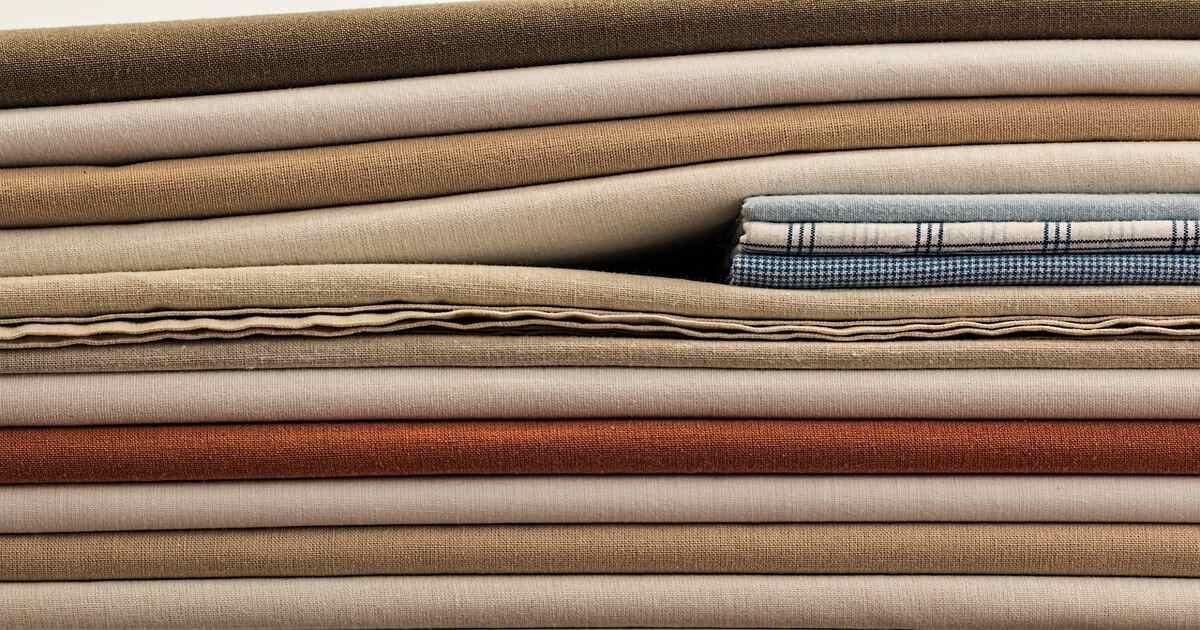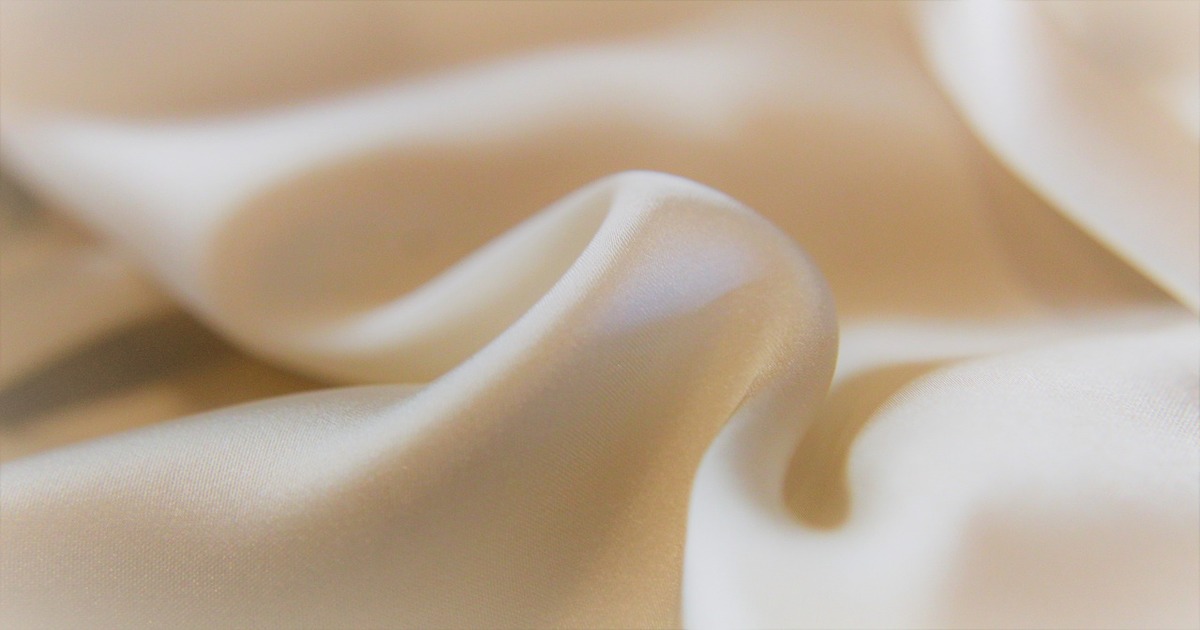Bedding for All Seasons: Choosing the Right Fabrics for Year-Round Comfort
Author: Manchester Collection Date Posted:14 February 2024

As the seasons change, so do the demands on your bedding. Choosing all-season bedding is the most effective solution and can make all the difference in ensuring comfort throughout the year. In this comprehensive guide, we'll walk you through the various fabrics suitable for all seasons, providing detailed insights to help you make informed decisions for a more restful sleep. Plus, we’ll add a bit about season-specific bedding if you do decide to go down that route. So let’s jump right in.
Understanding Seasonal Needs
Before delving into specific fabrics, let us consider the challenges posed by each season. Winter calls for warmth, summer demands coolness, and transitional seasons require adaptability. Your bedding should be versatile enough to meet these changing needs, addressing factors like temperature, humidity, and personal preferences.
All-Season Fabrics
Here, we’ll discuss the characteristics of all-season bedding fabrics, but we should also note that you don’t have to opt for just one type - layering your bed can lead to a more comfortable and luxurious sleeping experience and often contribute to the overall style of your bedroom. Now let’s get to the fabrics.
Cotton
Known for its breathability and comfort, cotton is a timeless choice. Its natural fibres wick away moisture, keeping you cool in summer and warm in winter. Cotton bedding is also easy to care for and becomes softer with each wash. Look for long-staple cotton for enhanced durability and softness.
Egyptian Cotton
For those seeking a touch of luxury, Egyptian cotton stands out. Grown in the Nile River Valley, it features long fibres that contribute to its superior softness and durability. The tight weave of Egyptian cotton results in a smooth, silky texture that enhances comfort. Opt for a thread count (we will explain the importance of thread count later) of 600 or higher for the utmost indulgence.
Jersey Cotton
If you crave the coziness of your favourite T-shirt, jersey cotton is the answer. This type of cotton is soft and stretchy and provides a relaxed and comfortable sleeping experience. Jersey cotton is excellent for those who appreciate a slightly more casual and flexible feel in their bedding. It drapes well over the mattress, offering a snug fit.
Linen

As a breathable fabric, linen excels in warmer seasons. Derived from the flax plant, linen has natural temperature-regulating properties, making it perfect for hot summer nights, but it also has natural insulating properties. Linen bedding can trap and retain warmth, providing comfort during colder winter nights, making it an all-season bedding material. Linen bedding has a distinct crispness, with a slightly textured surface that adds to its charm and it tends to soften over time, offering a more laid-back feel.
Microfiber
Versatility is the hallmark of microfiber. It is composed of finely woven synthetic fibres and is known for being durable, hypoallergenic, and resistant to wrinkles. Its versatility makes it an excellent choice for year-round use, offering a soft and smooth feel. Another property of microfiber is its ability to retain colour, making it an ideal choice for vibrant and long-lasting bedding.
Bamboo
For those with allergies or a preference for moisture-wicking properties, bamboo is an excellent choice. Bamboo fabric is naturally hypoallergenic and breathable, making it suitable for sensitive skin. It wicks away moisture, keeping you cool in the summer and warm in the winter. Bamboo bedding has a silky feel and a subtle sheen. Plus, it is one of the most sustainable resources, making bamboo bedding an eco-friendly choice.
Silk
Silk is all about opulence and introduces a luxurious touch to your bedding. Its temperature-regulating properties make it a suitable all-season bedding fabric, keeping you cool in summer and warm in winter. Silk is also naturally hypoallergenic and gentle on the skin, providing a smooth and opulent sleeping experience. Mulberry silk, in particular, is renowned for its supreme quality and durability.
Seasonal-Specific Fabrics
While the focus of this article is all-season bedding, why not take a minute to learn about two season-specific, unique bedding fabrics? Combining these two could provide you with the sleeping experience you are looking for. So, here are the characteristics of:
Flannel
When the winter chill sets in, flannel steps up to the plate. Its brushed surface traps heat, providing warmth and comfort. Flannel is often chosen for its cozy and insulating properties, making it an ideal choice for cold nights. Look for heavyweight flannel for maximum warmth and a velvety texture.
Sateen

Smooth and cool, sateen is ideal for summer nights. Its lustrous finish adds a touch of elegance to your bedding. Sateen is woven in a way that exposes more of the threads on the surface, creating a soft and luxurious feel. It's a perfect choice for those who enjoy a silky-smooth touch. Consider a higher thread count for a silkier feel and enhanced durability.
Explaining Thread Count
When talking about all-season bedding, it’s not just about the materials but also about how the materials are woven. The term ‘thread count’ emerges as a pivotal factor that influences the fabric's texture, strength, and overall quality. Thread count refers to the number of lengthwise and widthwise threads woven into one square inch of fabric.
In simple terms, thread counts refer to how densely the fabric is woven. It typically starts at 200 threads per square inch and goes to 1000 or even beyond. This numerical representation mirrors the density of the weave, with higher figures denoting a more tightly interwoven fabric.
While a higher thread count commonly correlates with a silkier and softer touch, it's essential to dispel the notion that an exceedingly high thread count equates to superior quality. Excessive thread counts may result in a denser fabric, potentially imparting a heavier and less breathable feel.
Achieving the perfect balance between comfort and breathability for all-season bedding hinges on selecting an optimal thread count. If you relish a crisper texture with a hint of coolness, a moderate to high thread count might align with your inclinations. On the other hand, if warmth retention and an exceptionally soft and velvety touch are your preference, a slightly higher thread count may be more fitting.
All-Season Bedding Maintenance and Care Tips
Investing in quality bedding requires specific care tailored to the characteristics of each fabric to ensure longevity and continued comfort. While you should always follow the manufacturer’s instructions, here is how you should care for each material in general:
Cotton
Washing: Machine wash coloured and patterned cotton in cold water with a mild detergent. Use warm water for white or stained bedding. Use a gentle cycle to prevent excessive wear. Separate light and dark colours to avoid colour bleeding.
Drying: Tumble dry on a low heat setting or air-dry. Remove promptly to minimize wrinkles. Iron on a medium setting if needed.
Storage: Store in a cool, dry place. Avoid exposure to direct sunlight to prevent fading.
Linen
Washing: Machine wash in cold or lukewarm water with a mild detergent. Use a gentle cycle to protect the fibres.
Drying: Air-dry or tumble-dry on a low heat setting. Linen may become softer with each wash.
Storage: Store in a cool, dry place. Linen benefits from good air circulation.
Microfiber
Washing: Machine wash in cold water with a mild detergent. Avoid fabric softeners as they can affect the fibre's performance.
Drying: Tumble dry on a low heat setting. Microfiber dries quickly, reducing the risk of wrinkles.
Storage: Fold neatly to avoid creases. Store in a cool, dry place.
Bamboo
Washing: Machine wash in cold water with a mild detergent. Use a gentle cycle to preserve the fibres.
Drying: Air-dry or tumble-dry on a low heat setting. Bamboo fabric benefits from air circulation.
Storage: Fold neatly and store in a cool, dry place.
Silk
Washing: Hand wash in cold water with a silk-friendly detergent unless it is clearly stated on the care label that the fabric is machine-washable. Avoid wringing or twisting the fabric. Dry cleaning is also a suitable option.
Drying: Air-dry silk by laying it flat on a clean, dry towel. Avoid direct sunlight, which can fade silk.
Storage: Store in a cool, dark place. Consider using breathable fabric or acid-free tissue to protect against dust.
Flannel
Washing: Machine wash in cold water with a gentle detergent. Use a delicate cycle to maintain the fabric's softness.
Drying: Tumble dry on a low heat setting or air-dry. Remove promptly to prevent wrinkles.
Storage: Fold neatly and store in a cool, dry place.
Sateen
Washing: Machine wash in cold water with a mild detergent. Use a gentle cycle to protect the lustrous finish.
Drying: Tumble dry on a low heat setting or air-dry. Iron on a low heat setting only if needed.
Storage: Store in a cool, dark place. Avoid exposure to direct sunlight.
Order High-Quality All-Season Bedding Online
At Manchester Collection, you can find high-quality and affordable all-season bedding. From Egyptian cotton sheets to silk pillowcases to linen quilt covers, we have everything you need for your bedroom. Simply order online and we will ship your items right to your doorstep. Or find a store near you if you wish to feel the quality of the bedding for yourself!
